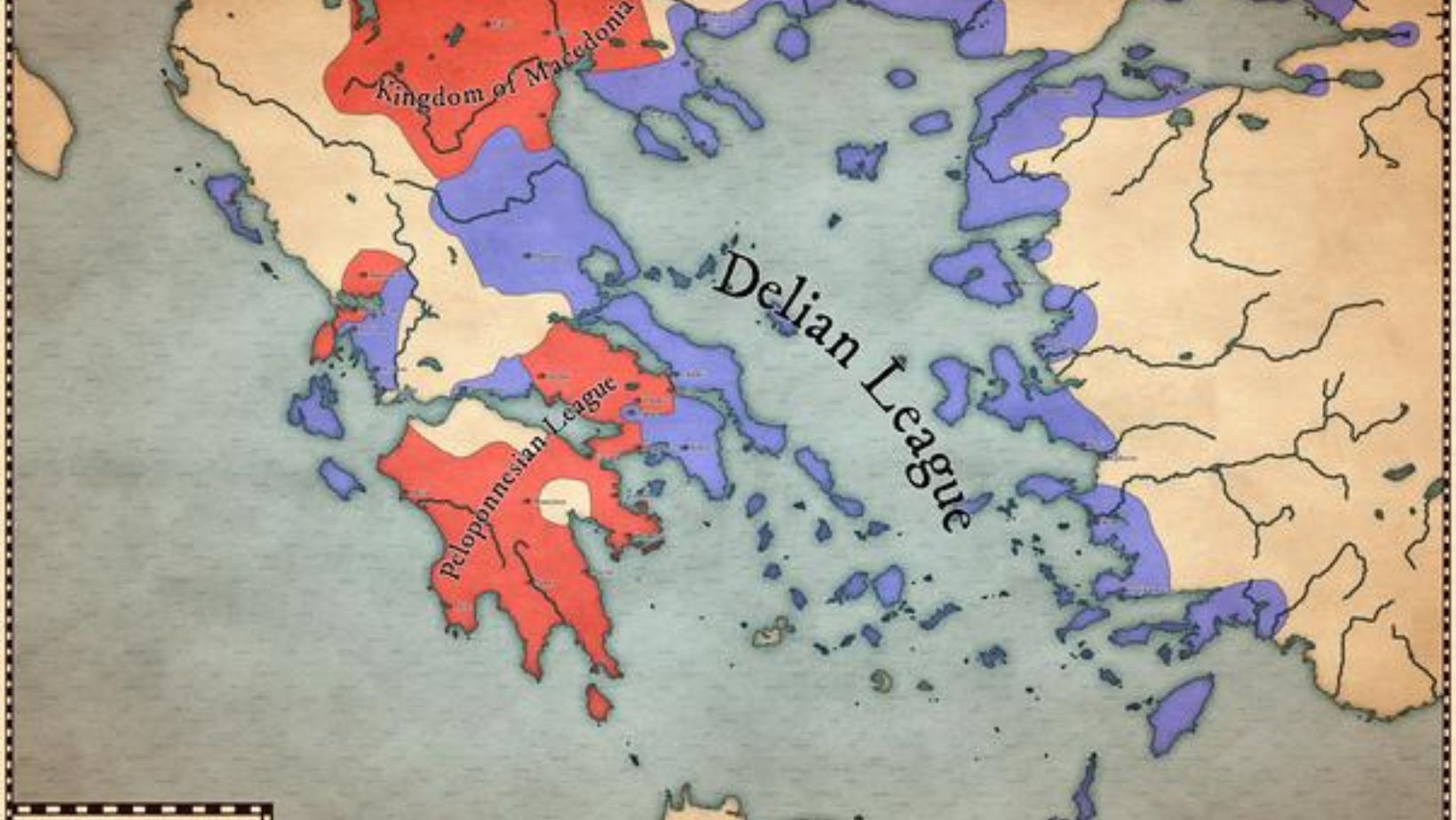When we talk about epic confrontations in ancient history, few can hold a candle to the clash known as the Delian League vs Peloponnesian War. This wasn’t just a skirmish; it was an era-defining battle for dominance among Greek city-states with Athens and Sparta at its heart. The stakes? Having a grip on Greece and spreading their influence all over the Mediterranean wasn’t just a power move; it was like setting the chessboard in their favor.
When these leagues came together, it was a game-changer for how countries thought about military moves and making friends in high places. With Athens leading a sea-based empire through the Delian League and Sparta helming an army-focused coalition via the Peloponnesian League, tension was inevitable.
Table of Contents:
- Overview of the Delian League and Peloponnesian War
- Comparing the Delian League and Peloponnesian League
- Key Battles and Campaigns of the Delian League
- Turning Points in the Peloponnesian War
- Aftermath and Consequences
- Conclusion
Overview of the Delian League and Peloponnesian War

The Delian League was a military alliance formed in 478 BCE. Athens took the lead, uniting several Greek city-states to guard against revenge attacks from the Persian Empire.
But let’s be real. Athens had ulterior motives. This league gave them major power and prestige. They dominated the Mediterranean Sea.
Over 150 city-states joined the Delian League at the start. Most were from the Aegean islands and Ionian coast.
The goal? Liberate eastern Greek cities from Persian rule. But also to protect against future Persian attacks after key Greek victories at Marathon, Salamis, and Plataea.
Causes of the Peloponnesian War: Delian League vs Peloponnesian War
Some trace the roots of the war back to Cleisthenes’ democratic reforms, which Sparta opposed.
But the more direct cause? Athenian control of the Delian League. This naval alliance allowed Athens to dominate the Mediterranean. Tensions rose.
Timeline of Major Events
The First Peloponnesian War was the initial clash between Athens and Sparta. It lasted 15 years.
The Thirty Years Peace treaty in 445 BCE brought a temporary truce. But in 431 BCE, the main Peloponnesian War erupted. It forever changed the Greek world.
Comparing the Delian League and Peloponnesian League: Delian League vs Peloponnesian War
Athens led the Delian League. Sparta headed its own alliance – the Peloponnesian League. A showdown was inevitable.
The Delian League had over 300 member city-states at its peak. The Peloponnesian League included city-states under Spartan control.
Athens increasingly tightened its grip on the Delian League. They used military force to keep members in line and demand tribute.
Military Capabilities: Delian League vs Peloponnesian War
The Delian League focused on naval power, while the Peloponnesian League excelled in land warfare.
As one source puts it, the two leagues aimed to destroy Persian influence. But their real goal was to outdo each other militarily.
Political Influence
Sparta was the key player in defeating Persia. Some argue the Delian League was just a way for Athens to counter Spartan power.
The leagues became tools in the Athens-Sparta rivalry. Their conflict led to the massive Peloponnesian War.
Key Battles and Campaigns of the Delian League: Delian League vs Peloponnesian War
The Delian League launched several offensives against the Persian Empire. But they ultimately failed to defeat the Persians decisively.
Wars Against Persia
The Delian League won key victories against Persian forces, like at Eurymedon. They pushed Persia out of Thrace.
But defeats and the war with Sparta forced Athens to abandon its eastern campaigns. The Delian League never achieved total victory over Persia.
Turning Points in the Peloponnesian War: Delian League vs Peloponnesian War
The Peloponnesian War had three main phases. Each marked a shift in the conflict between Athens and Sparta.
Archidamian War
Named after Spartan king Archidamus, this first phase lasted a decade. Both sides won victories and suffered losses. But neither gained a clear edge.
Aftermath and Consequences
The Peloponnesian War reshaped Greece. It ended the golden age of Athens and Greek unity. The war left Greece weakened and vulnerable.
Decline of the Delian League: Delian League vs Peloponnesian War
The heavy tribute Athens imposed on the Delian League led to unrest. Moving the league treasury to Athens was a power grab that signaled a new Athenian empire.
Ironically, this empire crumbled after Athens’ defeat to Sparta. The league dissolved.
Athens’ loss in the Peloponnesian War ended its days as a superpower. The conflict was never renewed. Greece entered a new era, with a power vacuum left by Athens’ fall.
Shift in Power Balance
Sparta emerged as the dominant force after the war. But it was a pyrrhic victory. All of Greece suffered economic decline and poverty in the war’s aftermath.
The Peloponnesian War left no clear winner, only a fractured and weakened Greek world. A once-great civilization torn apart by decades of brutal warfare.
Key Takeaway: Delian League vs Peloponnesian War
The Delian League started as a powerful alliance led by Athens to protect against Persian attacks, but it evolved into an Athenian empire, leading to tensions with Sparta. This rivalry sparked the Peloponnesian War, changing Greece forever and ending its golden age.
Conclusion: Delian League vs Peloponnesian War
In reflecting on our journey through this monumental period – from high-stakes power plays to devastating conflicts – one thing stands clear: understanding Delian League vs Peloponnesian War is crucial for appreciating how these events sculpted ancient civilization dynamics.
This historical face-off did more than pit two powers against each other; it highlighted strategic ingenuity, resilience, and moments where human ambition stretched beyond imaginable limits. While exploring these epochs might seem like stepping back into a distant past, their lessons remain relevant today – showing us not only how wars were fought but also why they endure in memory.